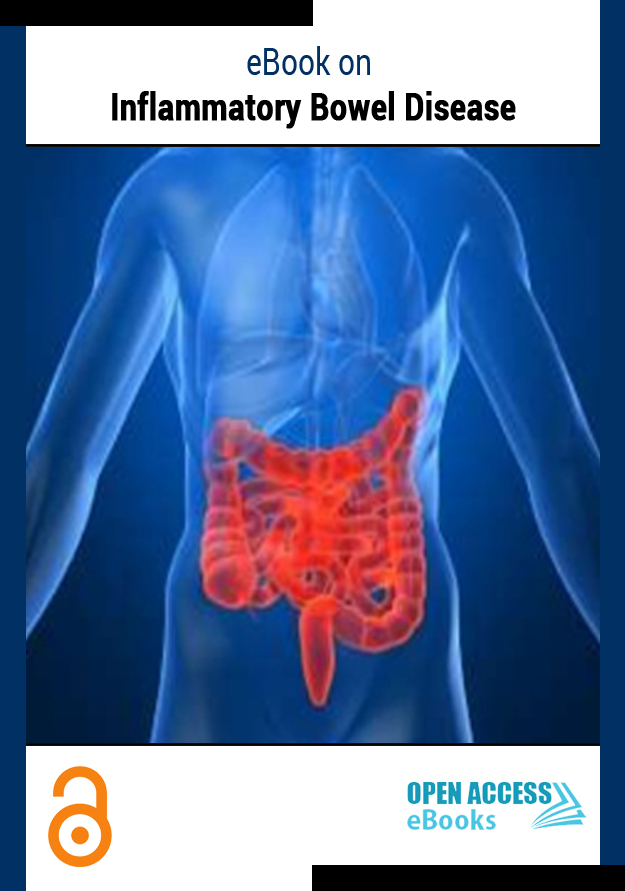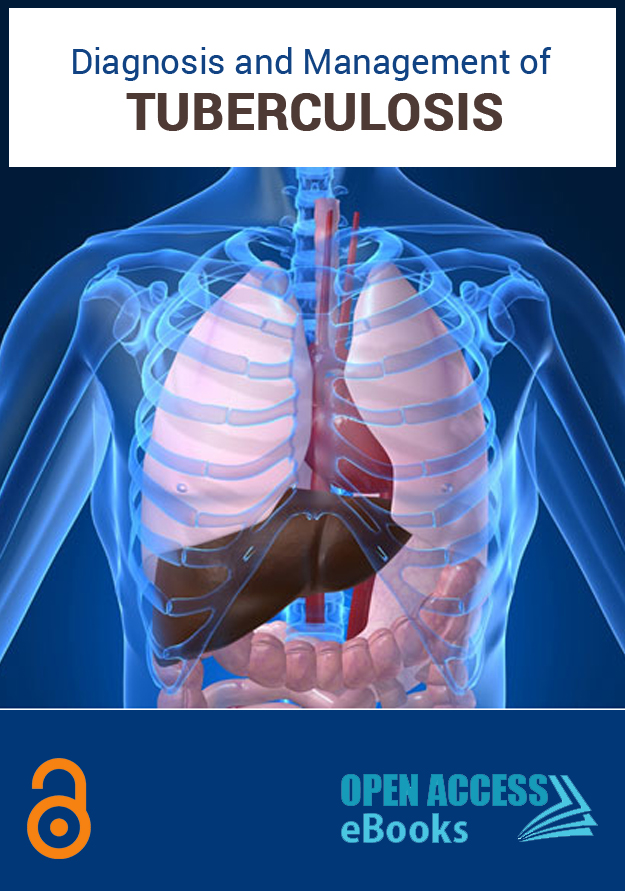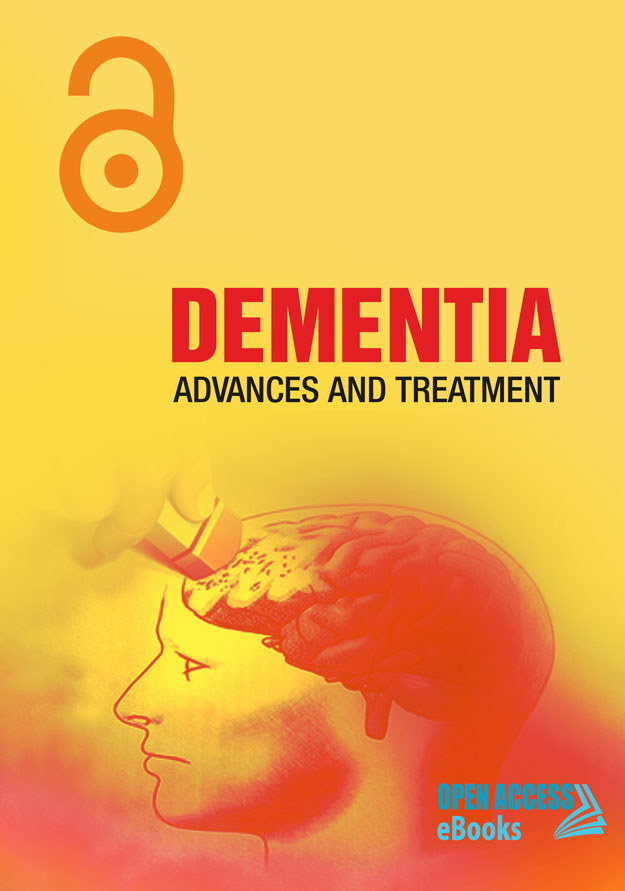
ISBN: 978-93-87500-06-8
Editors:
1. Badal Roy
2. Newton A
3. Solomon Habtemariam
4. Azita Hekmatdoost
5. Gunjan Desai
Inflammatory bowel disease is due to complex biological response of body tissues in colon and small intestine. Most common diseases are Crohn's disease, and Ulcerative colitis. The reason of IBD is unknown but Genetics and immune system problems are associated in formation.
Open Access eBooks is inviting researchers working within the areas of IBD to submit their book chapter for the publication in volume 1 of an eBook entitled eBook on Inflammatory Bowel Disease
All book chapters undergo review process and published content is available in PDF & HTML formats.
Benefits of publishing with us:
Universal Access: eBooks published in Open Access eBooks gain international visibility. No region barriers and content is accessed by everyone across the world from our website. We also deposit published eBooks in different databases.
Freely Available: Open Access eBooks follows the principles of Open Access and the content is available to the readers without any cost. Readers can read, share, and store the published ebooks/book chapters.
Copyright with Authors: As an eBook publisher, we serve researchers in publishing their valuable work after the stringent review process. However, copyright lies with authors. We follow the CC-BY-NC-ND license (https://creativecommons.org/licenses/by-nc-nd/3.0/).
Different Formats: We provide eBooks in PDF and HTML formats. Both formats are user friendly and can act as per the user requirements. We put our efforts to provide other formats in future.
For more information, contact info@openaccessebooks.com
Published Chapters:
Pulling back to the nature: A condition to fight IBD
Author(s): Manoj Patidar; Naveen Yadav; Sarat K. Dalai*
Inflammatory bowel disease (IBD) grouped as autoimmune disease arises due to inflammation of small and large intestine. Based on the target organ IBD is classified under Ulcerative colitis (UC; affects the colon) and Crohn’s disease (CD; affects whole intestinal wall but mainly to the ileum) [1]. 1-1.6 million people are suffering from IBD in United States and the main target age group is between 15-30 yrs. The prevalence rate of 201/106 of CD and 238/106 of UC in adults attracts attention to the disease [2]. Abdominal cramping, weight loss, fever, sweats, fatigue, growth retardation, diarrhoea, constipation and abnormal bowel movement are the major symptoms of IBD. It is clearly noticed that IBD is not limited to just inflammation of the digestive tract, but it can lead to other complications like arthritis, thromboembolism, cardiovascular-, pulmonary-&neurological disease affecting the quality of life of an individual. It is clearly seen that IBD runs in the family, and the family members of affected individuals are at the maximum risk of IBD.
Primary Sclerosing Cholangitis (PSC) and Inflammatory Bowel Disease (IBD)
Author(s): Amir Houshang Mohammad Alizadeh
Primary sclerosing cholangitis is a chronic cholestatic syndrome affecting both extrahepatic and intrahepatic bile ducts that is frequently progressive, leading to liver cirrhosis, portal hypertension, and eventually to end-stage liver disease. Primary sclerosing cholangitis is strongly associated with inflammatory bowel disease. The prevalence of inflammatory bowel disease (typically ulcerative colitis) among primary sclerosing cholangitis patients is approximately 70-80% while only 2-7.5% of patients with ulcerative colitis will develop primary sclerosing cholangitis. Primary sclerosing cholangitis is accompanied by an increased risk of liver failure, cholangiocarcinoma, and colorectal cancer. Cholangiography is considered the gold standard for the diagnosis of primary sclerosing cholangitis. It is noteworthy that medical, endoscopic, and surgical therapies do not convincingly alter disease progression in primary sclerosing cholangitis patients. Liver transplantation is currently the only available therapeutic modality for patients with end-stage primary sclerosing cholangitis.
Early Diagnosis of Pediatric Crohn's Disease - Pointing Problems and Suggestions
Author(s): Maraci Rodrigues
Inflammatory bowel disease (IBD) includes Crohn's disease (CD) and ulcerative colitis (UC) and can be diagnosed in childhood and adolescence in 25% of cases. Children that contract IBD before 10 years of age almost always present with extensive colitis that cannot be classified as either UC or CD, and remain colitis not determined (IBD-U) until several years later. Data from the literature on the time of diagnosis vary considerably. A pediatric IBD study in Germany found that the average time for CD diagnosis was 5 months (2-10 months), for the UC was 3 months (1-6 months) and IBD-U was 4 months (2-11 months) and the growth deficit was the most common sign in cases with late diagnosis
Role of surgery for idiopathic inflammatory bowel disease with a focus on postoperative events and their management
Author(s): Gunjan S Desai*; Prasad Pande; Aniruddha Phadke
The inflammatory disorders of bowel are very common in gastrointestinal clinics. These are characterized by intermittent relapsing and remitting course or chronic inflammatory course affecting the gastrointestinal tract and comprise of a spectrum of disorders as shown in Figure 1. In this chapter, the focus is on understanding idiopathic IBD, especially ulcerative colitis (UC) and crohn's disease (CD) from a surgeon's perspective with specific focus on life after surgery for this IBD.
Dilemmas and Pitfalls in Diagnostic Evaluation of Inflammatory Bowel Disease: A Review on the Available Armamentarium for Diagnosis
Author(s): Gunjan S Desai MS, MRCS, FMAS*; Ujwala Sitaram Chavan MD; RajvilasNarkhede MS, DNB [GI Surgery] ; Prasad Pande MS, FMAS; Nikunj Khatri MD, DNB; Chandralekha Tampi MD
Inflammatory Bowel Disease (IBD) can be broadly divided into Ulcerative Colitis (UC) and Crohn's Disease (CD), with 10-15% patients showing overlapping features of both, termed as Indeterminate Colitis (IC). In practice, however, the diagnosis is never straightforward, and a plethora of conditions of varying severity, including both benign and malignant diseases, have remarkably similar presentation and features as any of the IBD spectrum. In the present chapter, we highlight the common mimics of IBD that make the diagnosis and management of this entity difficult. The differences are highlighted across clinical presentation and laboratory parameters, imaging features, endoscopic findings, and pathological findings.
Advanced Drug Delivery Systems for Inflammatory Bowel Disease (IBD)
Author(s): M J Newton Amaldoss
Targeted release describes drug release directed towards isolating are concentrating a drug in a body region, tissue or site for an absorption or for drug action [1]. Oral route is the most popular route for administration of drugs meant for systemic effects. The oral route is very extensive and different parts of it have different structure and different physic chemical characteristics.


